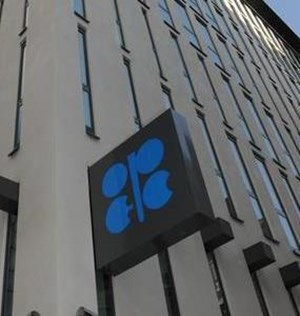OPEC+ to decide on extending oil production cuts into Q2 2024 in March
(Bloomberg) – OPEC+ nations plan to decide in early March whether to extend oil production cuts into the second quarter, delegates said.
Seven coalition members have pledged supply curbs totaling about 900,000 bpd this quarter, in tandem with a 1 MMbpd reduction by group leader Saudi Arabia. They’ll review whether to continue the curbs in about one month’s time, according to officials, who asked not to be identified.
OPEC and its partners are trying to stave off a global supply surplus amid slowing demand growth and record U.S. shale production.
Oil prices have seen only limited gains this year — holding near $80 a bbl in London — even as conflict rages in the Middle East and shipping comes under attack in the Red Sea. That’s a little too low for some OPEC+ members to cover government spending.
Saudi Energy Minister Prince Abdulaziz bin Salman told Bloomberg in early December that the production restraints could “absolutely” be prolonged past March if necessary. Algeria’s Energy Ministry said on Thursday that it “stands ready” to continue the curbs with OPEC+ into the second quarter, or “take further necessary measures if oil market conditions require.”
Estimates from International Energy Agency suggest that world oil markets will tip back into surplus next quarter, and remain oversupplied for the rest of the year, if OPEC+ relaxes the curbs and revives production.
In addition to the kingdom, the other OPEC+ members making the latest curbs are Russia, Iraq, the United Arab Emirates, Kuwait, Kazakhstan, Algeria and Oman.
An OPEC+ panel that met on Thursday didn’t recommend any changes to the existing cuts and scheduled its next meeting for April 3. As the coalition typically sets policy a month in advance — in time to allocate cargoes to customers — that date would be too late for a decision on the second quarter.
Instead, officials said the relevant members will assess the strategy in early March.
The group’s current curbs were announced on Nov. 30 in the form of separate statements on state media by participating member countries, rather than in a collective OPEC+ communique. The same approach could be used when it comes to revealing an extension.



